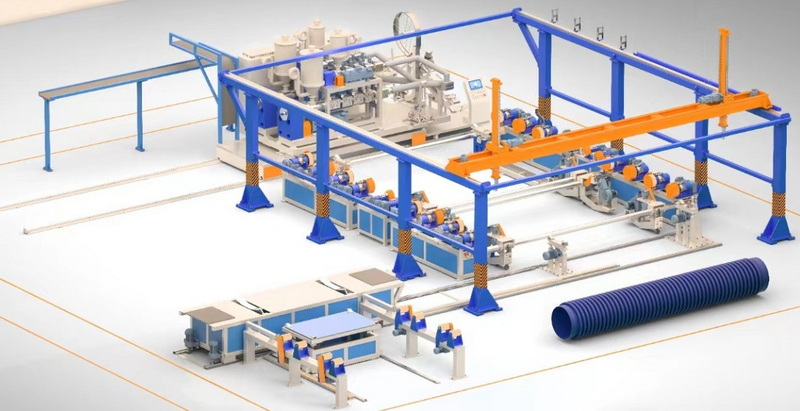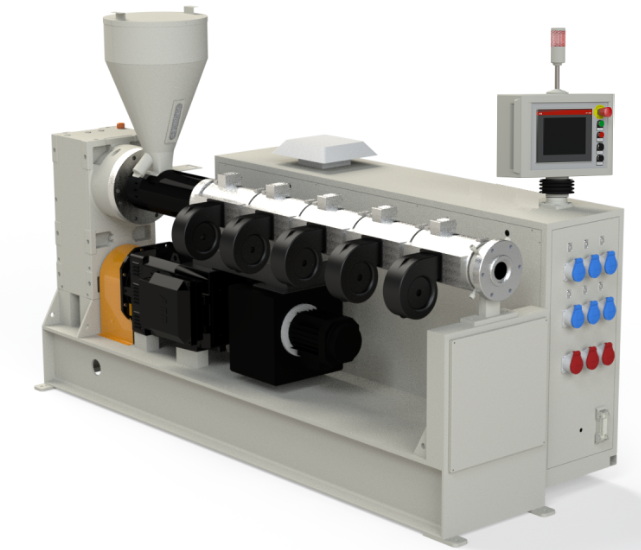Content Menu
● Introduction to Cable Extrusion
>> Key Components of Cable Extrusion Machines
● Types of Cable Extrusion Machines
>> Single Extrusion Machines
>> Co-extrusion Machines
>> Triple Extrusion Machines
● Cable Extrusion Equipment
>> Extruders
>> Cooling Systems
>> Dies and Cross-heads
● Applications of Cable Extrusion Machines
>> Telecommunications Industry
>> Power Distribution Industry
>> Electronics Industry
● Troubleshooting Common Issues
● Advances in Cable Extrusion Technology
>> Advanced Materials
>> Automation Systems
● Conclusion
● FAQ
>> 1. What is the purpose of a co-extrusion machine in cable manufacturing?
>> 2. How does the ROEX extruder series contribute to energy efficiency in cable extrusion?
>> 3. What are the common materials used in cable extrusion?
>> 4. What is the role of cooling systems in the cable extrusion process?
>> 5. How do triple extrusion machines enhance cable performance?
Cable extrusion machines are crucial in the production of insulated cables, which are essential for various industries such as telecommunications, power distribution, and electronics. These machines enable the creation of cables with specific properties like insulation, shielding, and strength by extruding different materials around conductors. In this article, we will delve into the various types of cable extrusion machines and their applications, highlighting the importance of cable extrusion equipment in modern manufacturing.

Introduction to Cable Extrusion
Cable extrusion involves converting raw materials, typically plastics like PVC, PE, or XLPE, into continuous profiles that protect conductors from external damage. The process begins with raw material preparation, feeding, and then extrusion through a machine that melts and shapes the material around a conductor.
Key Components of Cable Extrusion Machines
1. Raw Material Preparation: High-purity materials are selected and prepared to meet specific standards.
2. Feeding System: Ensures consistent material flow into the extruder.
3. Extruder Machine: The core of the process, responsible for melting and shaping the material.
Types of Cable Extrusion Machines
Single Extrusion Machines
Single extrusion machines are used for simple cables requiring basic insulation. They extrude a single layer of material around a conductor.
A[Raw Material] --> B[Extruder]
B --> C[Single Layer Insulation]
C --> D[Final Cable]
Co-extrusion Machines
Co-extrusion machines extrude multiple layers of different materials simultaneously, enhancing properties like insulation and shielding.
Triple Extrusion Machines
Triple extrusion involves extruding three layers at once, typically for high-performance cables used in harsh environments. This process ensures that cables are well-insulated, shielded, and protected with an outer jacket.
A[Conductor] --> B[Insulation Layer]
B --> C[Shielding Layer]
C --> D[Protective Jacket]
D --> E[Final Cable]
Cable Extrusion Equipment
Extruders
Extruders are the heart of cable extrusion equipment. They come in various designs, such as the ROEX series by Rosendahl Nextrom, known for their efficiency and reduced energy consumption. These extruders are designed to handle a wide range of materials and can be customized for specific applications.
Cooling Systems
After extrusion, cables pass through cooling systems to solidify and set their final dimensions. Cooling systems are critical for maintaining the quality and consistency of the cables produced.
Dies and Cross-heads
Dies and cross-heads are crucial for shaping the extruded material around the conductor. The design of these components determines the final shape and size of the cable.
A[Material] --> B[Die]
B --> C[Cross-head]
C --> D[Shaped Cable]

Applications of Cable Extrusion Machines
Cable extrusion machines are used in various industries:
- Telecommunications: For communication cables, including fiber optic cables and coaxial cables.
- Power Distribution: For power cables, which require high insulation and durability.
- Electronics: For electronic lines and coaxial cables used in consumer electronics.
Telecommunications Industry
In telecommunications, cable extrusion machines are used to produce cables with precise specifications to ensure high-speed data transmission. These cables often require multiple layers for insulation and shielding to minimize signal interference.
Power Distribution Industry
For power distribution, cables must withstand high voltages and environmental stresses. Cable extrusion machines produce cables with thick insulation layers and protective jackets to ensure safety and reliability.
Electronics Industry
In electronics, cable extrusion machines are used to produce cables for internal wiring in devices. These cables require precise insulation to prevent electrical interference and ensure device reliability.
Troubleshooting Common Issues
Common issues in cable extrusion include temperature control, extrusion speed, and material flow. Proper maintenance and adjustment of cable extrusion equipment are essential to resolve these issues.
- Temperature Control: Incorrect temperatures can lead to inconsistent material flow and quality issues.
- Extrusion Speed: Speed must be optimized to ensure uniform layer thickness and prevent defects.
- Material Flow: Consistent material flow is crucial for maintaining cable quality and preventing production downtime.
Advances in Cable Extrusion Technology
Recent advancements in cable extrusion technology include the use of advanced materials and automation systems. These improvements enhance efficiency, reduce waste, and improve product quality.
Advanced Materials
New materials like nanomaterials and advanced polymers offer improved insulation properties and durability. These materials are being integrated into cable extrusion processes to produce high-performance cables.
Automation Systems
Automation systems, including robotic handling and monitoring software, are being used to optimize production processes. These systems help maintain consistency and reduce human error in cable manufacturing.
Conclusion
Cable extrusion machines play a vital role in producing high-quality cables for diverse applications. Understanding the different types of machines and their components is crucial for efficient production. The choice of cable extrusion equipment depends on the specific requirements of the cable being produced.

FAQ
1. What is the purpose of a co-extrusion machine in cable manufacturing?
Co-extrusion machines are used to produce cables with enhanced properties by extruding multiple layers of different materials simultaneously. This technique improves insulation, shielding, and strength.
2. How does the ROEX extruder series contribute to energy efficiency in cable extrusion?
The ROEX extruder series by Rosendahl Nextrom offers significant energy savings compared to conventional extruders, consuming roughly a quarter less energy for the same output.
3. What are the common materials used in cable extrusion?
Common materials include PVC, PE, and XLPE, each offering unique properties suited for different applications.
4. What is the role of cooling systems in the cable extrusion process?
Cooling systems are used to solidify the extruded material and set its final dimensions, ensuring the cable retains its shape and size.
5. How do triple extrusion machines enhance cable performance?
Triple extrusion machines enhance cable performance by extruding three layers simultaneously, typically including a conductor, insulation, and a protective outer jacket, making them suitable for harsh environmental conditions.






















